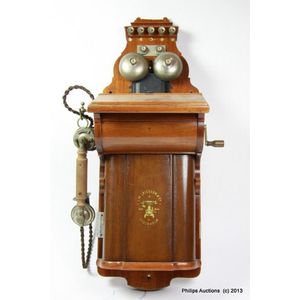Victorian Walnut Mirrored Credenza with Marble Top
You must be a subscriber, and be logged in to view price and dealer details.
Subscribe Now to view actual auction price for this item
When you subscribe, you have the option of setting the currency in which to display prices to $Au, $US, $NZ or Stg.
- Platform Base - Flat-surfaced bases supporting the pedestals of dining tables and some other smaller occasional tables, including console and pier tables. Introduced during the Regency period, they continued in popularity throughout the 19th century. On tables, platform bases are usually of triform, or three-cornered shape, supported by bun, turned or carved claw feet. They may be either of veneered box-like construction, or formed from the solid timber.
- Serpentine - Resembling a serpent, in the form of an elongated 'S'. A serpentine front is similar to a bow front, except that the curve is shallow at each end, swelling towards the middle. The term presumably derives from its similarity to a moving snake or serpent. Serpentine fronts are usually veneered, with the carcase either being cut and shaped from a solid piece of timber, or built in the 'brick' method.
- Column - An architectural feature sometimes used for decorative effect and sometimes as part of the supporting construction. Columns should generally taper slightly towards the top. They may be plain or decorated with carving, fluting or reeding. Columns may be fully rounded or, more commonly, half-rounded and attached with glue, screws or pins to the outer stiles of doors, or the facing uprights on cabinets and bureaux.
- Victorian Period - The Victorian period of furniture and decorative arts design covers the reign of Queen Victoria from 1837 to 1901. There was not one dominant style of furniture in the Victorian period. Designers used and modified many historical styles such as Gothic, Tudor, Elizabethan, English Rococo, Neoclassical and others, although use of some styles, such as English Rococo and Gothic tended to dominate the furniture manufacture of the period.
The Victorian period was preceded by the Regency and William IV periods, and followed by the Edwardian period, named for Edward VII (1841 ? 1910) who was King of the United Kingdom and the British Dominions and Emperor of India for the brief period from 1901 until his death in 1910.
This item has been included into following indexes:
Visually similar items

An ornately carved fretwork cedar hanging corner cabinet, Adelaide, circa 1885, 81 cm high, 34 cm wide, 21 cm deep. Literature: Australian Furniture: Pictorial History and Dictionary, 1788-1938, Kevin Fahy and Andrew Simpson, Casuarina Press Ptd Ltd, Wooll

An L.M. Ericsson & Co walnut wall telephone, early 20th century, very similar in style to the Ab 520 model of 1905 with an arched back and decorative crest with bells above a sloping writing plane and a rectangular body bearing the L.M. Ericsson & Co Stock

A good Victorian mahogany sideboard, with scroll carved back, a long centre drawer above a 2 door cabinet with 3 drawers inside, flanked by 2 outside doors with shelves inside, 181 cm wide, 60 cm deep, 157 cm high

A desk in the manner of Èugene Vallin, influenced by the desk in the Musee Corbin. This bespoke Art Nouveau style desk was commissioned and based on the original from 1899, made over a number of years by Jim Murray, a master craftsman from Marton. Made of
